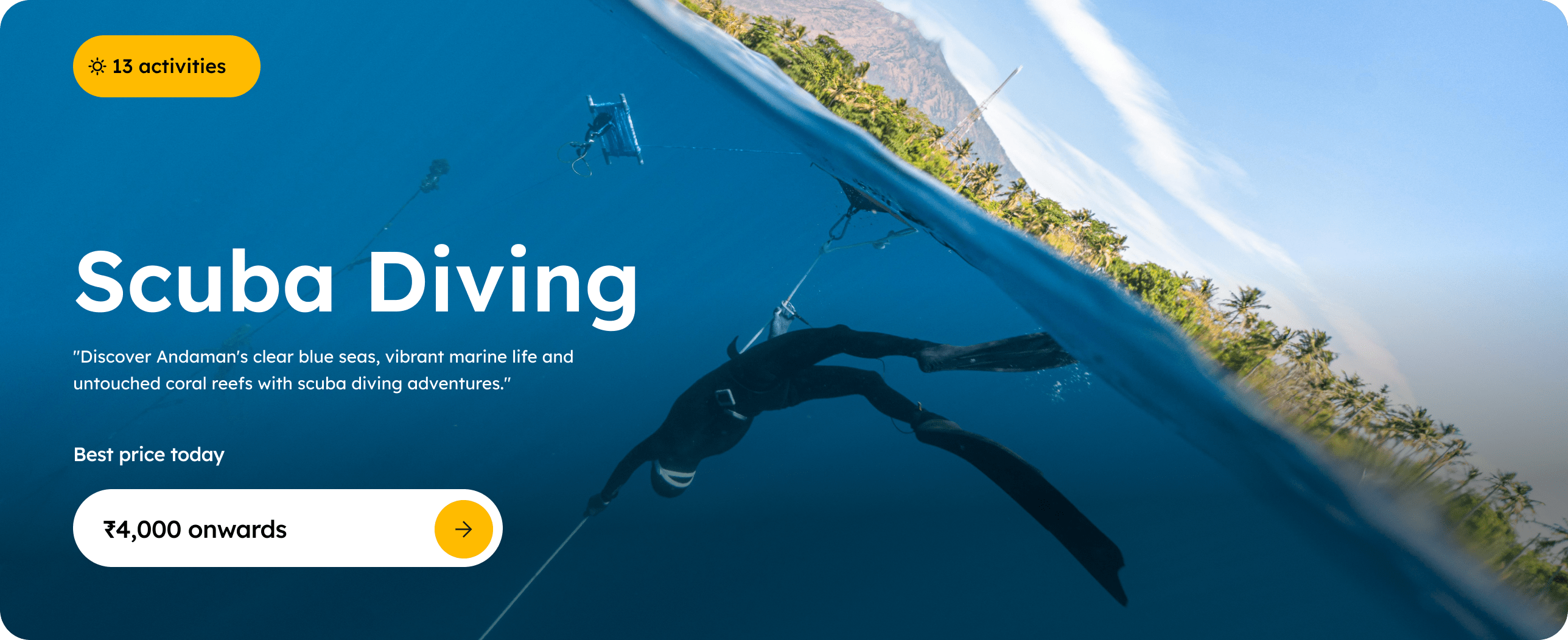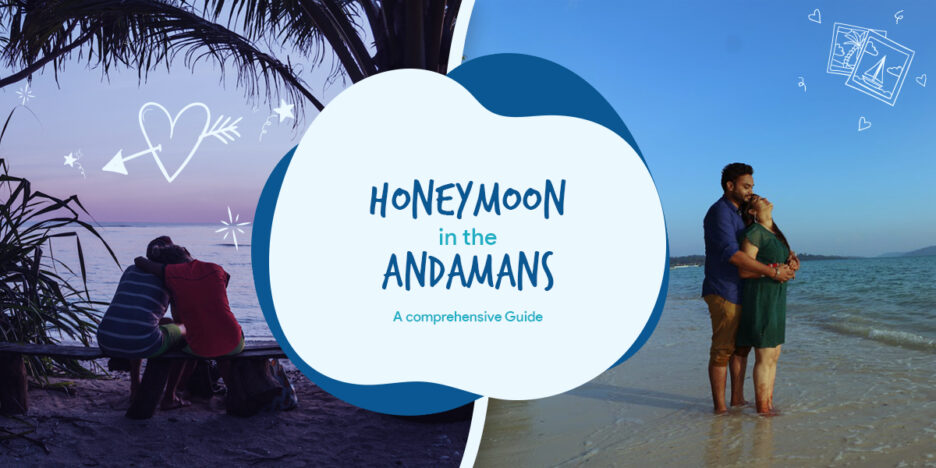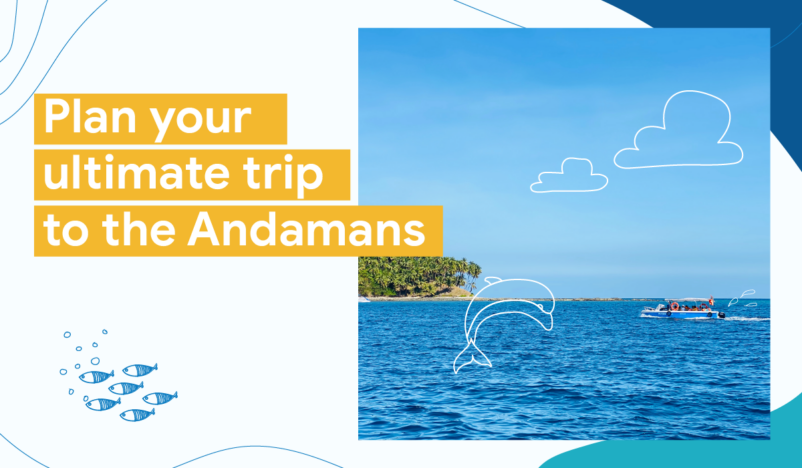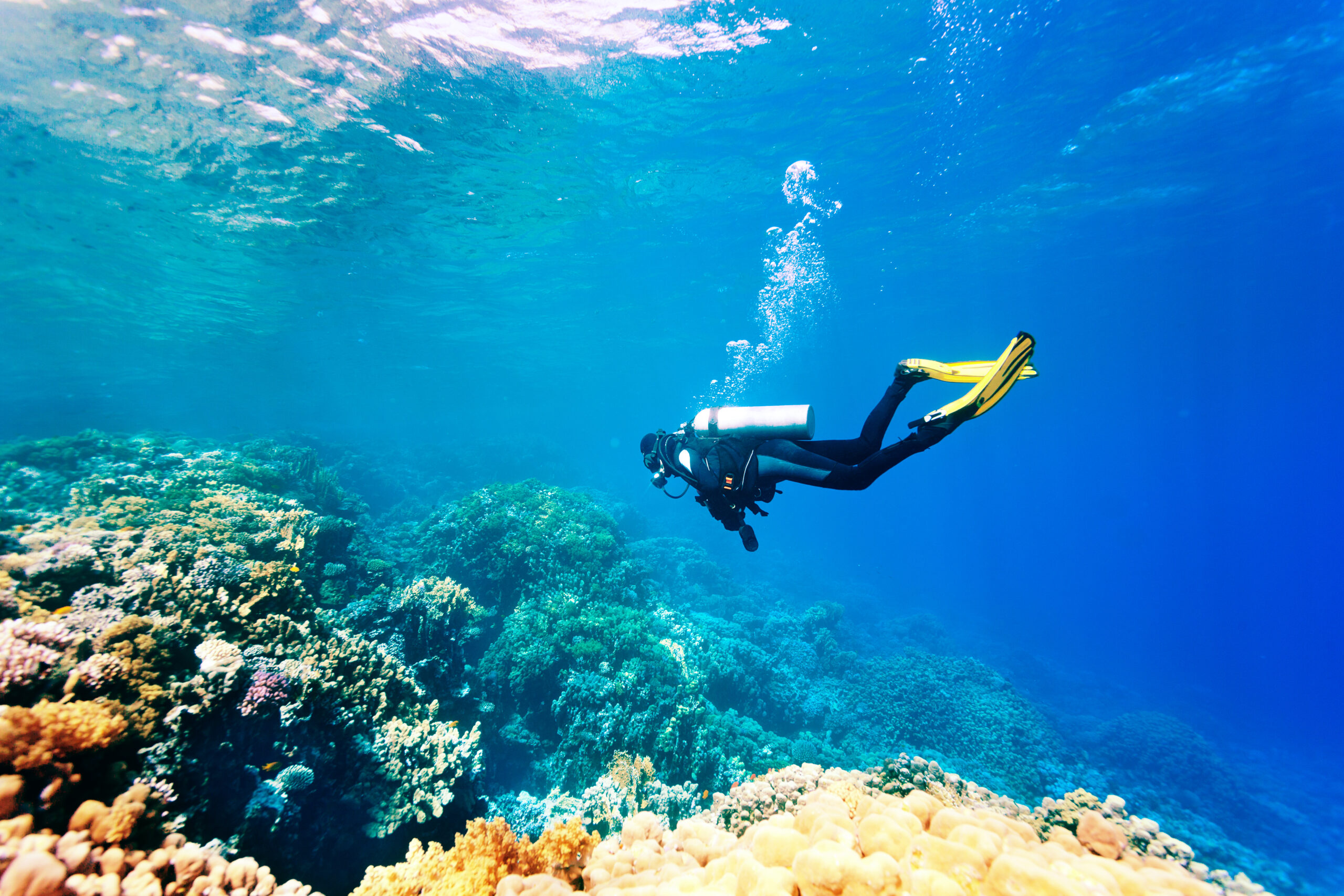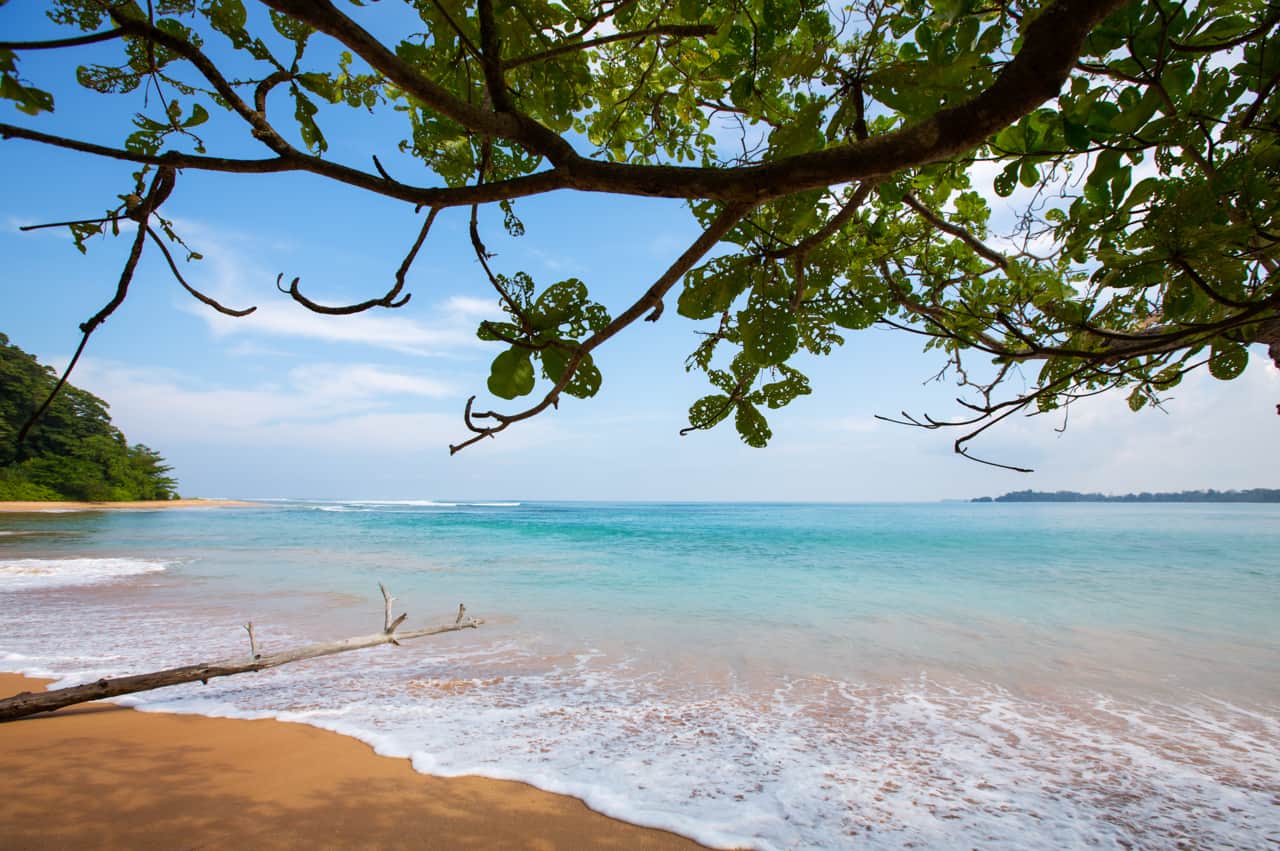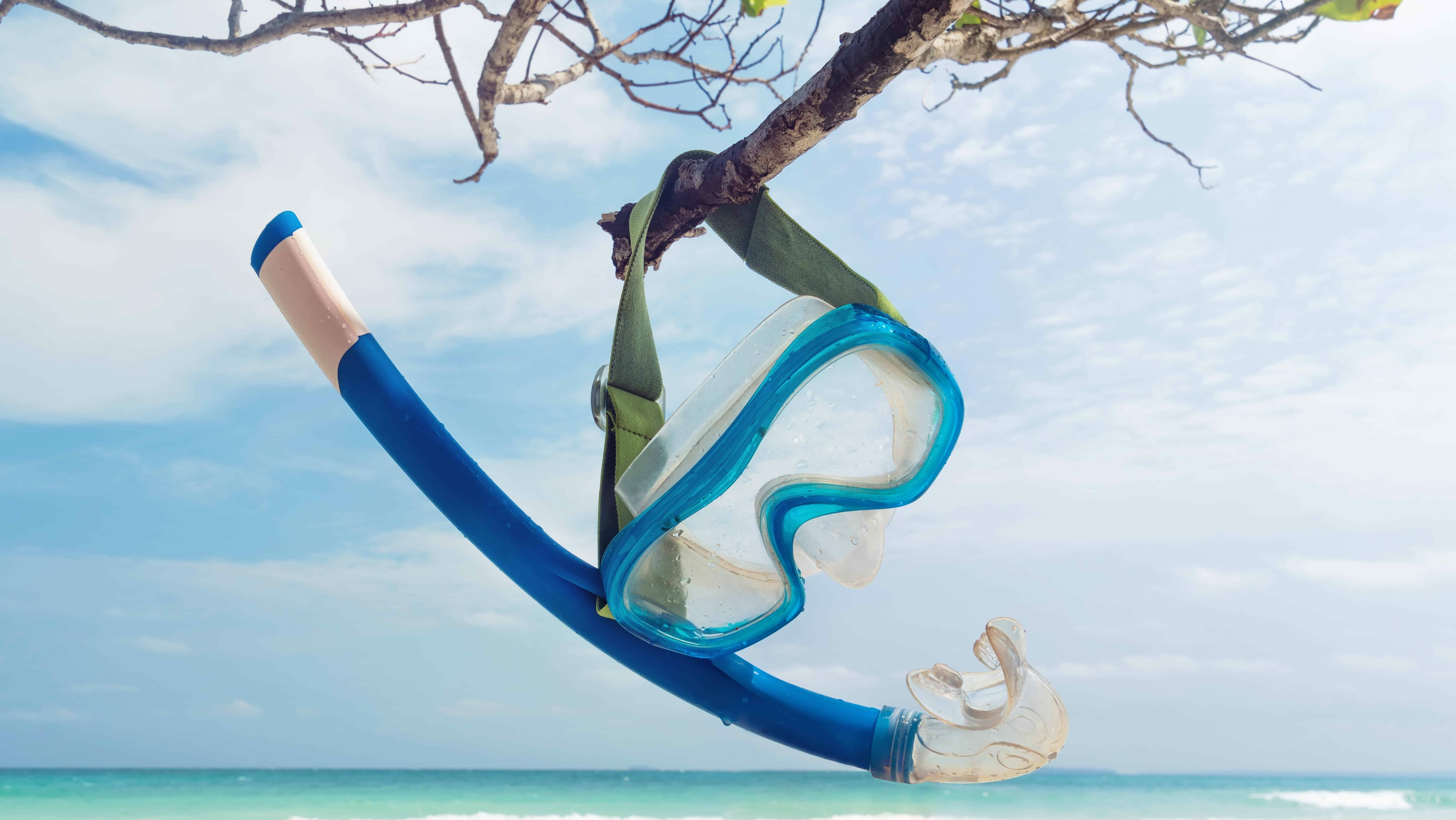Scuba Diving in Andaman: Best Sites, Prices, Season & Certification Guide
By - ishita
Last Updated - July 07, 2025
Water SportsScuba Diving
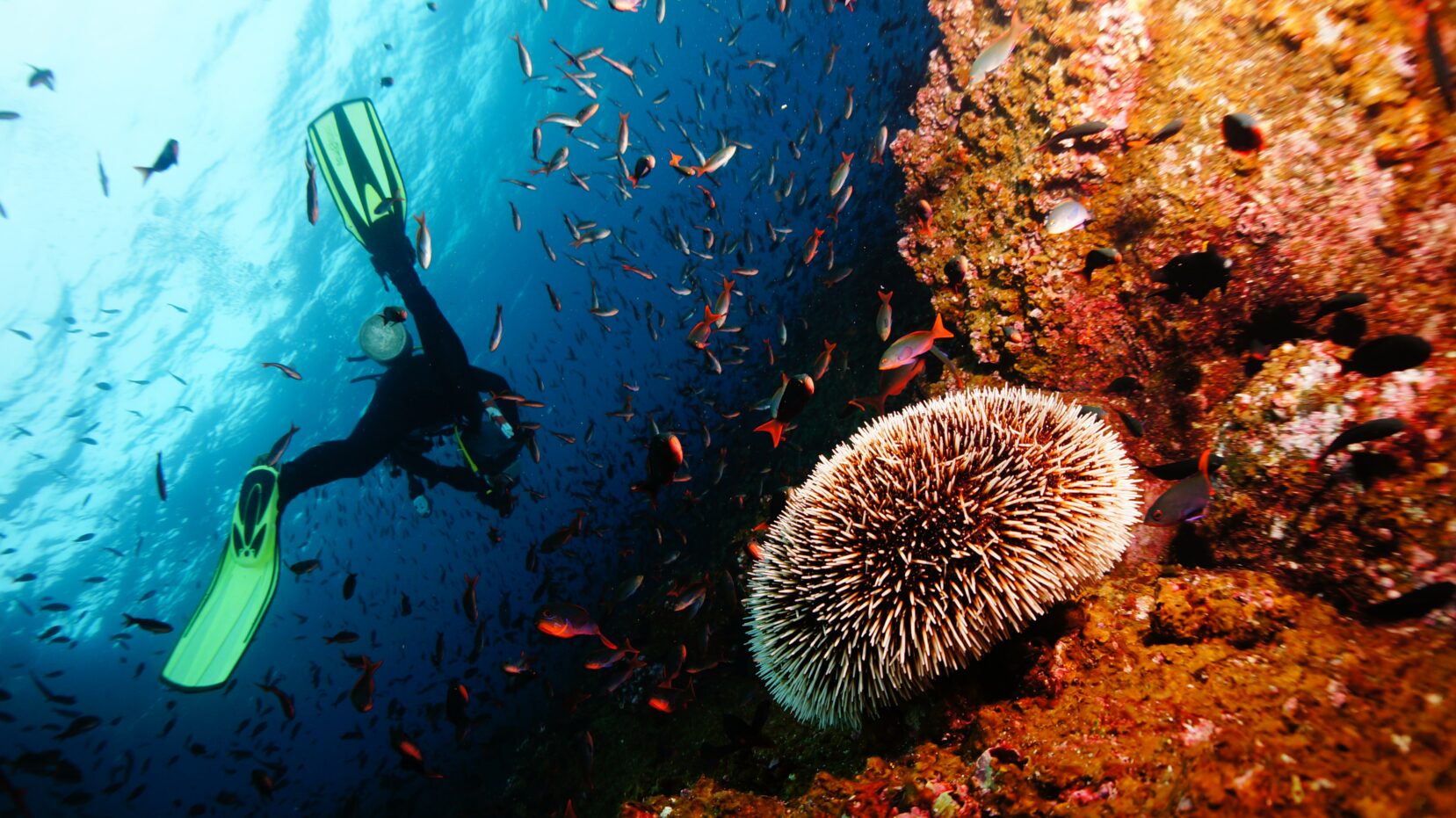
🤿 Table of Content 🤿
Scuba Diving in Andaman: Everything You Need to Know
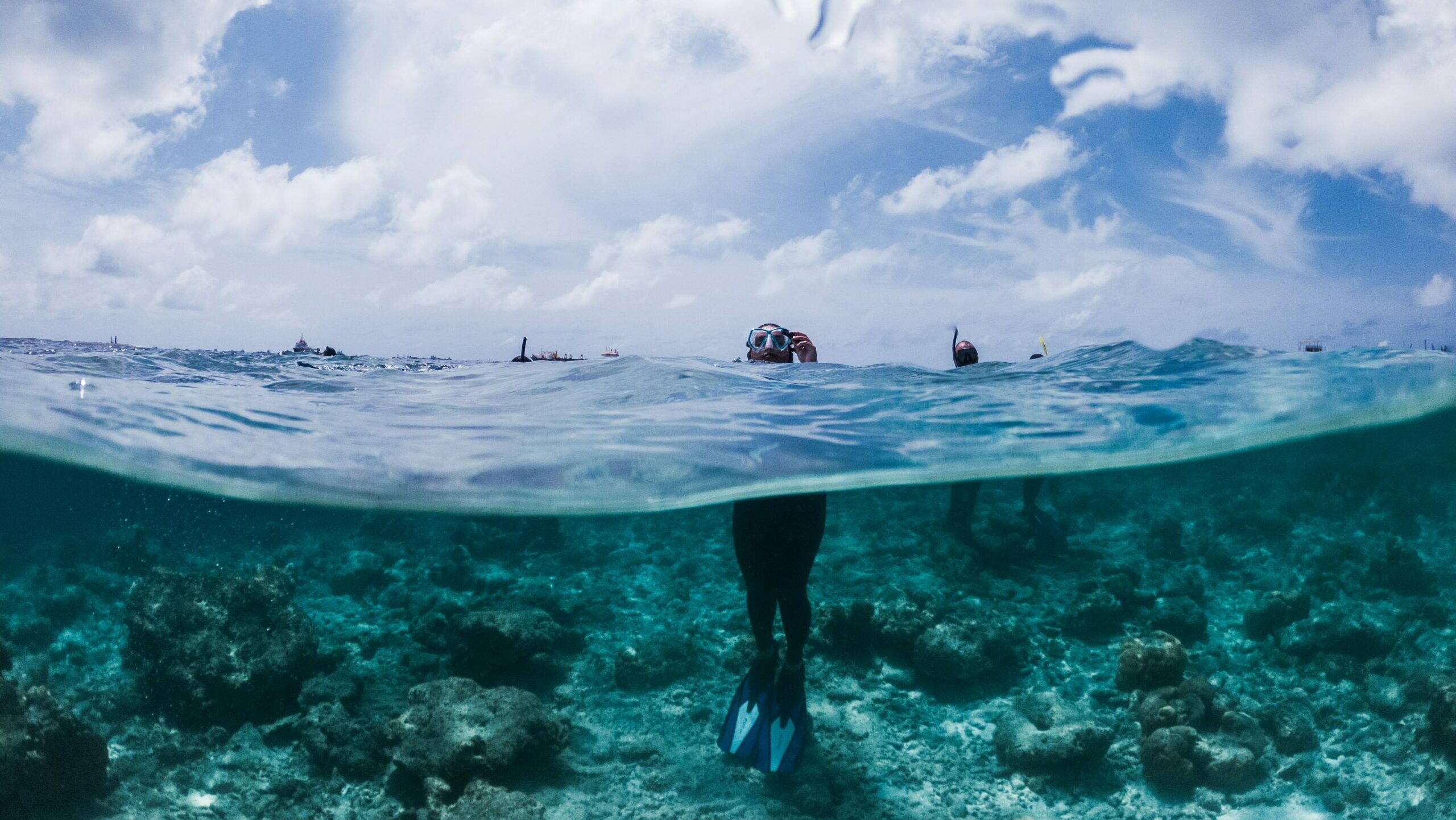
What is Scuba Diving?
Scuba Diving is a recreational sport that allows you to go underwater world with the help of a breathing apparatus that keeps you afloat. Scuba Diving in Andaman is a popular adventure activity that moves people and shows the wonders of the underwater world.
Who can Scuba Dive in Andaman Islands?
While it may seem highly complex, scuba diving is a very safe sport that allows people of varying capabilities to dive safely and enjoyably. Non-swimmers included. The minimum age limit for Scuba Diving in Andaman is between 10 to 60 years. Anyone above 45 years of age requires a fitness certificate from their doctor saying said person is fit to dive. Additionally, pregnant women are not allowed to participate in scuba diving in Andaman due to potential risks associated with the activity.
When is the best time to Scuba Dive in Andaman Islands?
Enjoyable throughout the year, non-monsoon seasons, October- May provide the best water temperature and underwater visibility which leads to spotting colorful corals and diverse marine life. Cyclonic weather or unexpected rains call for a prior check. Scuba diving early in the morning is the most common practice because of lighter sun and milder winds. Moon phases also affect water behaviour.
Why Scuba Dive in Andaman Islands?
A valuable part of the Coral Triangle, the Andaman Islands are located near southeast asia which has a rich marine biodiversity with vibrant coral reefs, crystal clear waters, and a unique scuba diving culture. The region’s marine ecosystem includes diverse marine life such as sea turtles, reef fish, sea anemones, manta rays, moray eels, soft corals, unicorn fish, vibrant fishes, and giant groupers. With several dive sites catering to all levels of divers from new divers to professional divers, it’s an unparalleled destination for exploring the underwater world.
For expert dive tips and curated diving itineraries, download this exclusive [Diver’s Guide] here:
Best Place To SCUBA Dive in Andaman Islands
Choosing where to dive in the Andaman Islands when you’re going to all the marine life hotspots can be a big confusion, so we’re breaking it down for you. The Port Blair vs Havelock Island vs Neil Island Scuba Diving Destinations Dilemma is now solved!
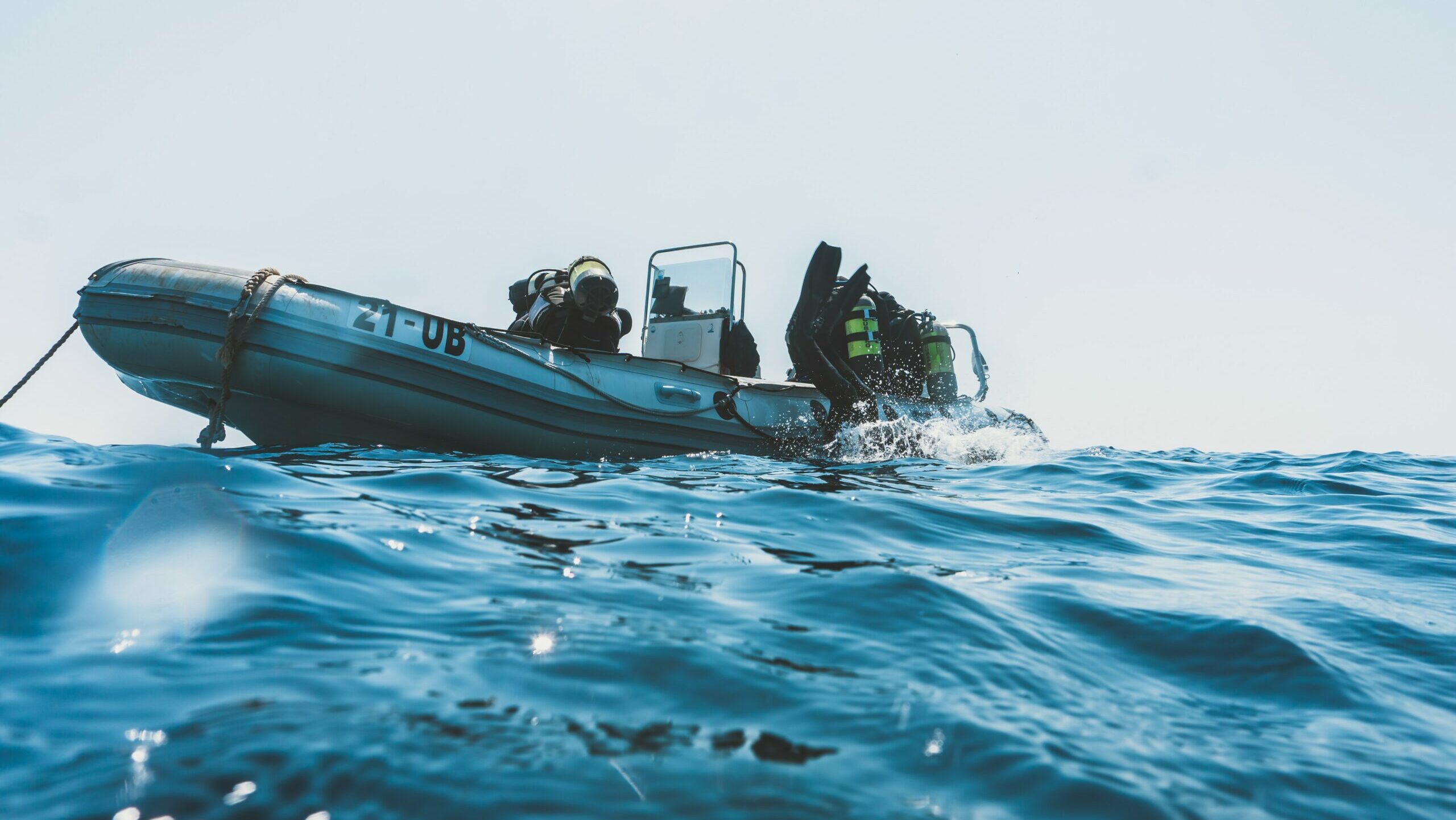
Scuba Diving in Port Blair
Port Blair is the capital city and one of the best places for scuba diving in Andaman and Nicobar Islands, Port Blair offers wonderful scuba diving sites. Chidiyatapu is where all the Scuba Diving in Port Blair happens. Because of the distant reefs, boat scuba diving is the only option available in Port Blair. Experience swimming amongst corals, a variety of fish, turtles and the songs of the ocean – it’s a dive of a lifetime and brace yourself for stunning underwater views with a colourful & rich marine life. It’s an experience that will make you want to come back for more!
Best Dive Sites in Port Blair
- Fishpoint Dive Site
- Lighthouse Dive Site
- Corruption Rock Dive Site
- Snake Island Dive Site near Corbyn’s Cove Beach
Read More: Things to Do in Port Blair
Scuba Diving in Havelock Island
Havelock Island is one of the highly recommended for Scuba diving sites due to its stunning corals and diverse marine life.Travelers from all around the world are attracted to this island as it holds the crown as scuba diving capital of India. To experience the more established and explored Scuba Diving in Andaman Islands, Havelock Island proves to be the best location . Scuba Diving sites in Havelock Island also gives you both the options of shore dive and boat diving which aren’t available elsewhere. Each dive site like Nemo reef is unique and sharks, manta rays, turtles (turtle beach), dugongs and barracudas are frequently spotted. The island is easily accessible via private and government ferry that ply from Port Blair to Havelock, making it a convenient diving destination for both beginners and seasoned divers.
Best Dive Sites in Havelock island
- White Tip Shark Dive Site
- Dixon’s Pinnacle Dive Site
- Jackson’s Bar Dive Site
- Johnny’s Gorge Dive Site
- Turtle Bay Beach Dive Site
- Nemo Reef Dive Site
- Turtle Beach Dive Site
- Elephant Beach Dive Site
For a more exclusive scuba diving experience, consider renting a chartered boat (with the necessary permits) and diving at Barren Island, home to India’s only active volcano. Barren Island’s mineral-rich volcanic sand creates vibrant dive site with unique habitat, attracting marine life that can’t be found elsewhere in the Andaman Islands.
Read More: Things to do in Havelock Island
Scuba Diving in Neil Island
On the other hand, if you’re an experienced certified Scuba diver, Scuba Diving sites in Neil Island is a good option as the dive sites are relatively deeper and less explored. It is the perfect option for those who prefer diving in quieter and more secluded spots, away from the tourist crowds. Neils beach and waters are unpolluted due to lesser crowd compared to Havelock Island which enhances underwater visibilty with its crystal clear water. Neil Island is also better for those divers who prefer boat dives, pristine reefs, vibrant marine life and a quieter scuba diving experience overall.
Read More: Things to do in Neil Island
Best Dive Sites in Havelock island
- Junction Dive Site
- K-Rock Dive Site
- Margarita’s Mischief Dive Site
- Jetty Channel Marker Dive Site
- Bus Stop Dive Site
Scuba Diving in North Bay Island
North Bay Island is that cool spot for water sports and for those who are eager to try scuba diving in Andaman once. It’s all about those pristine reefs and the crystal clear waters that make scuba diving here a total game-changer. Diving into North Bay’s lively underwater world, surrounded by all sorts of marine life. It’s not just a scuba diving, it’s like a mix of thrill and chill. Book your spot in advance – North Bay Island tends to get extremely crowded during peak tourist season, However, it’s worth mentioning that North Bay Island is not recommended for those who expect the best scuba diving experience.
How To Choose Your Dive Type?
With a wide variety of options available, scuba diving in Andaman Islands can seem a bit confusing at first dive. That’s why we’ve curated a list of all the dives and tips to help you choose the perfect one for yourself!
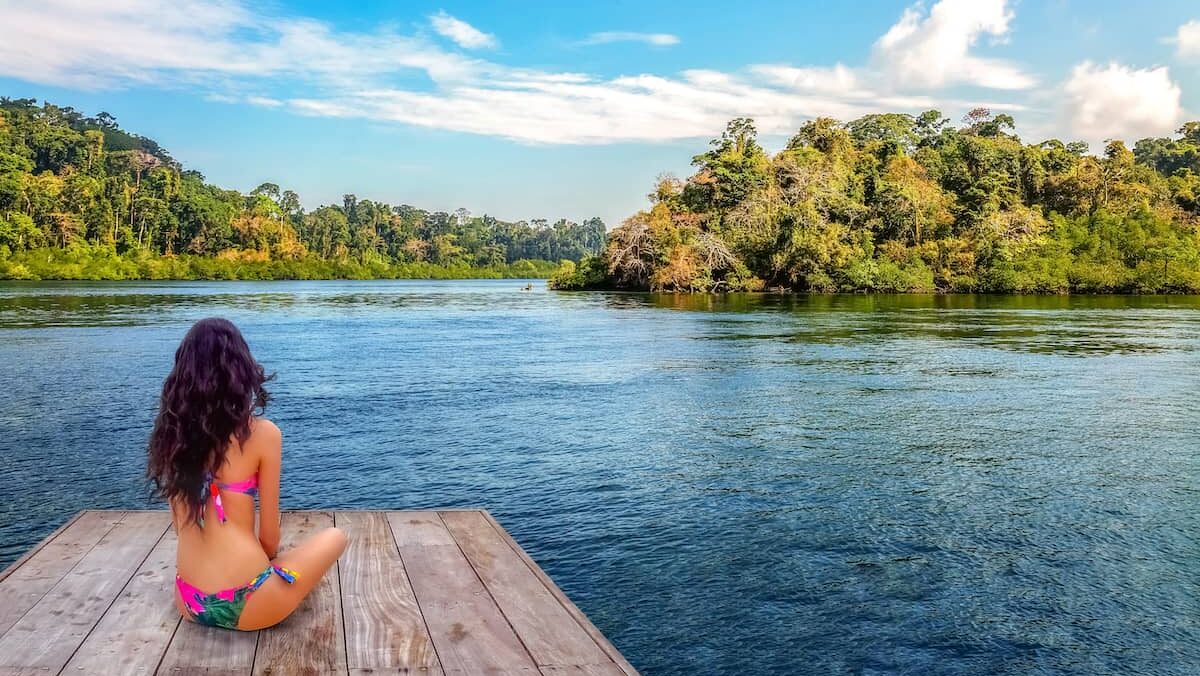
Choosing Scuba Dives for a First Time Diver (Beginners)
Discover Scuba Dive (DSD)
Discover Scuba Dive (DSD) is a single-day program designed for non-divers, offering a firsthand scuba diving experience of the underwater world, diving under the direct supervision of a dive professional. Perfect for non-swimmers, during a DSD dive, one can go down to a maximum depth of 12 meters (40 feet) or shallower.
A Discover Scuba Dive (DSD) usually has these
- A brief theory lesson and equipment familiarization
- Skill practice with an instructor in confined/shallow water
- A 45 minute to 1-hour dive underwater with an ideal instructor-diver ratio of 1:1
- GoPro Underwater photography.
Wondering what’s PADI courses? Trusted dive schools are registered with “Professional Association of Diving Instructors” (PADI) which is an international diver training organization that offers certified divers’ training programs.
In Andaman Islands, ‘Try Dives’, a variant of DSD for non swimmers, are shorter, budget-friendly options offered locally. However, lacking formal recognition, divers are advised to prioritize basic safety guidelines and opt for officially recognized programs for their first underwater world scuba diving experience. Apart from this, PADI also offers diver certifications for various difficulty levels and durations.
Rate Cards: Available in Havelock Island, Neil Island & Port Blair
DSD Shore Dive- INR 5000/- taxes included
DSD Boat Dive- INR 6799/- taxes included
Boat Dive
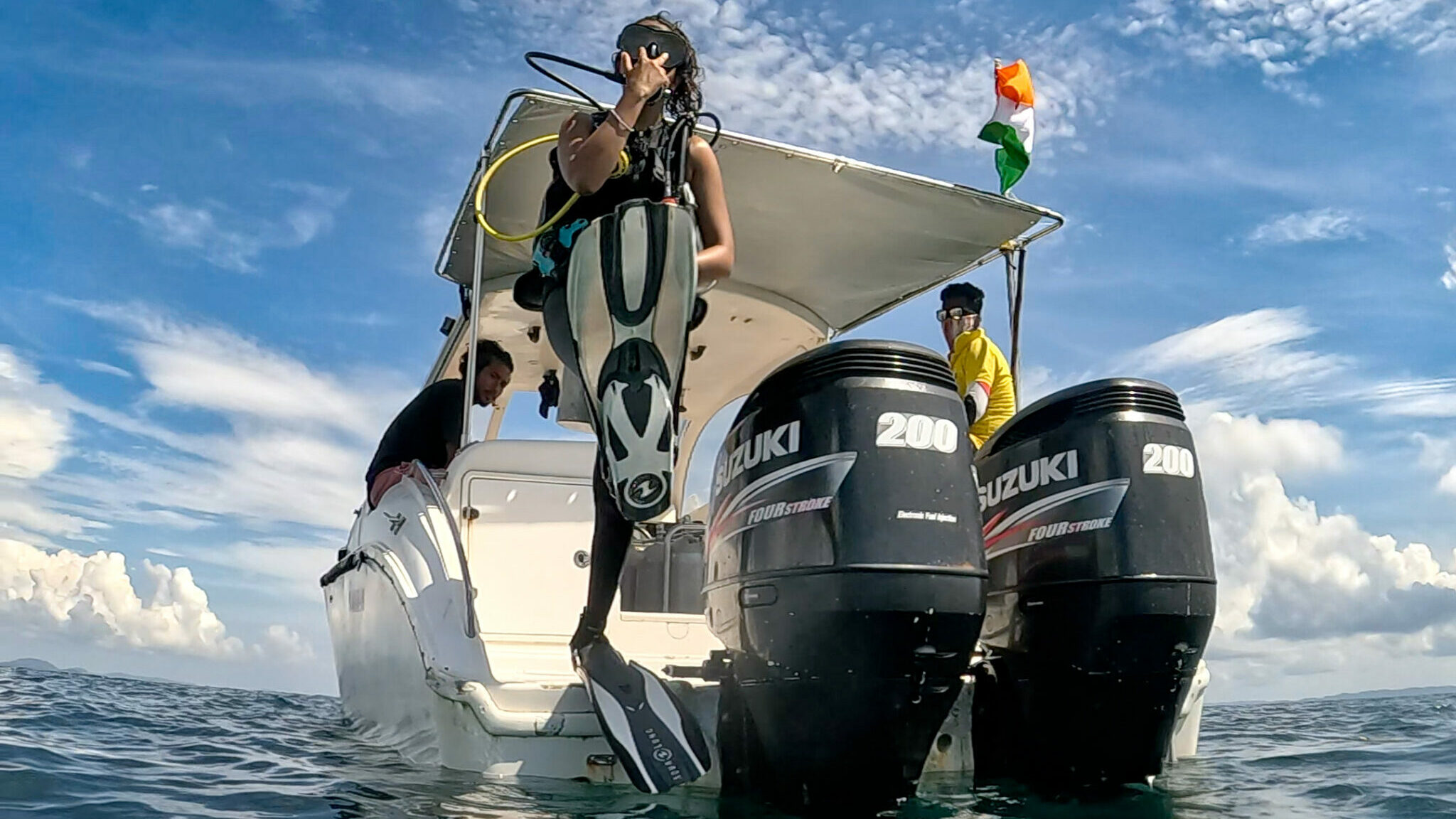
Once you’ve completed the paperwork, theory, and skill practice, you hop on a boat (usually just a 15-minute joyride), taking your way out into the ocean to this secluded reef spot – far, far away from the crowded hustle. And here’s the fun part, forget the typical water entry, we’re talking a thrilling ‘back-roll’ here! The whole boat diving program, from boat logistics to gearing up and the all-important dive briefing, clocks in at a little over 2 hours.
Scuba Diving Cost: starts from INR 6799/-
Duration: 2 hours.
Top Dive Sites: Havelock Island, Neil Island & Port Blair.
Pros: it offers exclusive and more secluded spots on which you can explore a wide range of marine life.
Cons: Not perfect for beginners who are not comfortable in the water.
Shore Dive
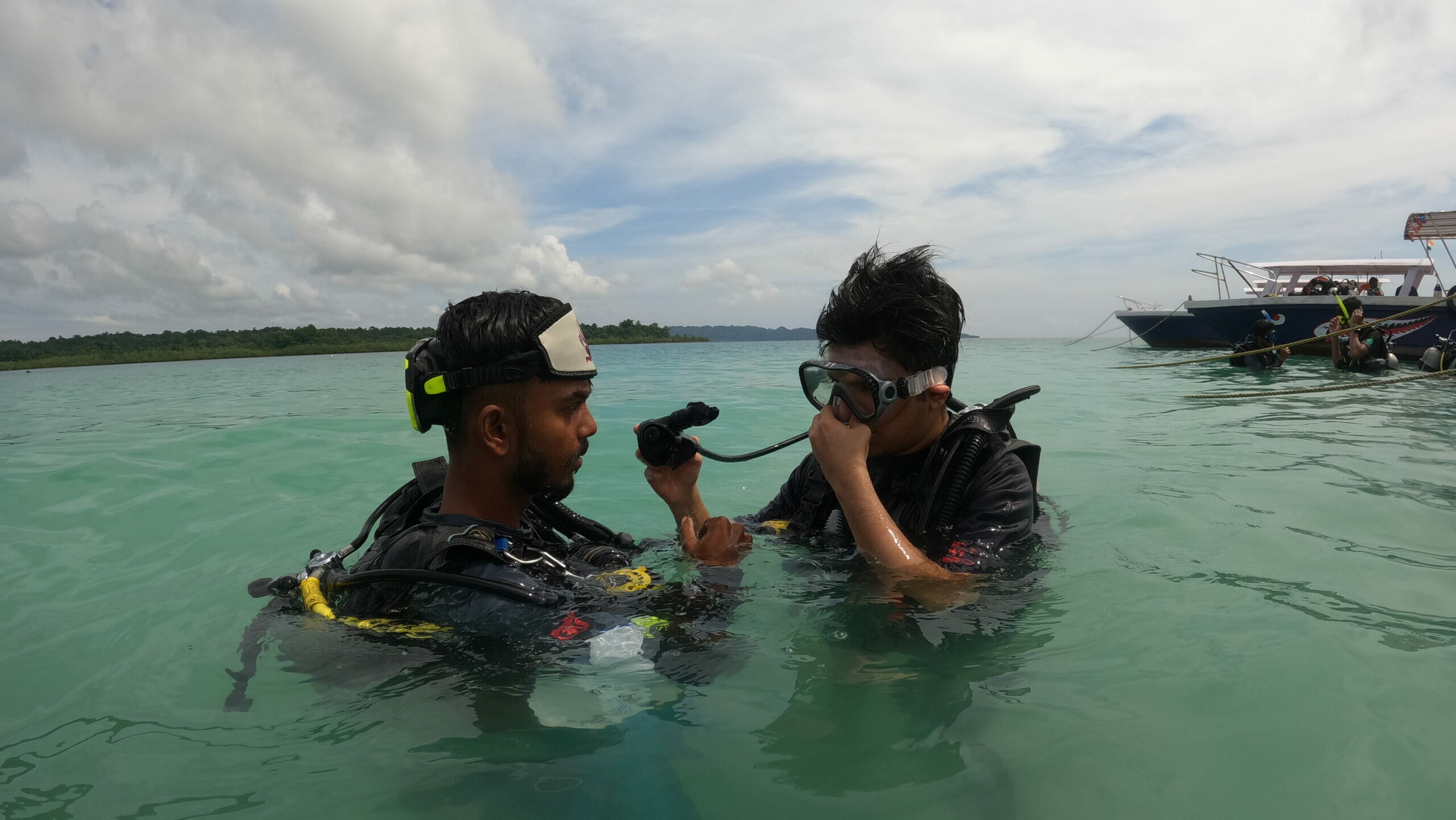
Alright, the shore diving is pretty much the same as boat scuba diving, but here’s the twist, this time, we’re going for a stroll. Yeah, you heard it right, a stroll into the water from the shore. As you get in, the water gets deeper, and boom, you’re on this adventure heading to your underwater world dive sites, all cool and submerged.
Once you’ve explored the chosen reef patch, it’s time to exit. How? Well, just swim back to the shore. It’s like a casual underwater walk with a dash of exploration. Easy peasy, right? Shore scuba diving in Andaman is perfect for non swimmers and comparatively lower than the cost of boat diving due to logistic differences.
Scuba Diving Prices: starts from INR 3500/-
Duration: 45 minutes.
Top Dive sites: Havelock Island (Nemo Reef)
Pros: Shore diving is cost-efficient and perfect for non swimmers and budget trip travellers looking to experience scuba diving in Andaman Islands while exploring its spectacular marine life.
Cons: More crowded during peak seasons.
Read More: Difference between Boat Dive and Shore Dive
Choosing Scuba Dive for Experienced Divers
Fun Dives
Have obtained an Open Water or Advanced Open Diver certification or for that matter, any scuba diving certification, and now you want to go dive for recreation and fun? Fun Dives are what you ask for. Fund dive is often conducted in interesting and picturesque dive sites filled with coral reefs, shipwrecks, or marine life sanctuaries. Scuba Diving in Havelock Island has one such site where a jeep is wrecked and you get to dive around it!
Fun dive usually go on for 30-45 minutes and are a visual as well as a sensory treat to the body and soul! If you are experienced divers with a scuba diving certificate, we urge you to go for at least one dive because trust us, you don’t want to miss one of the most beautiful coral reefs around the world.
Becoming a Certified Diver
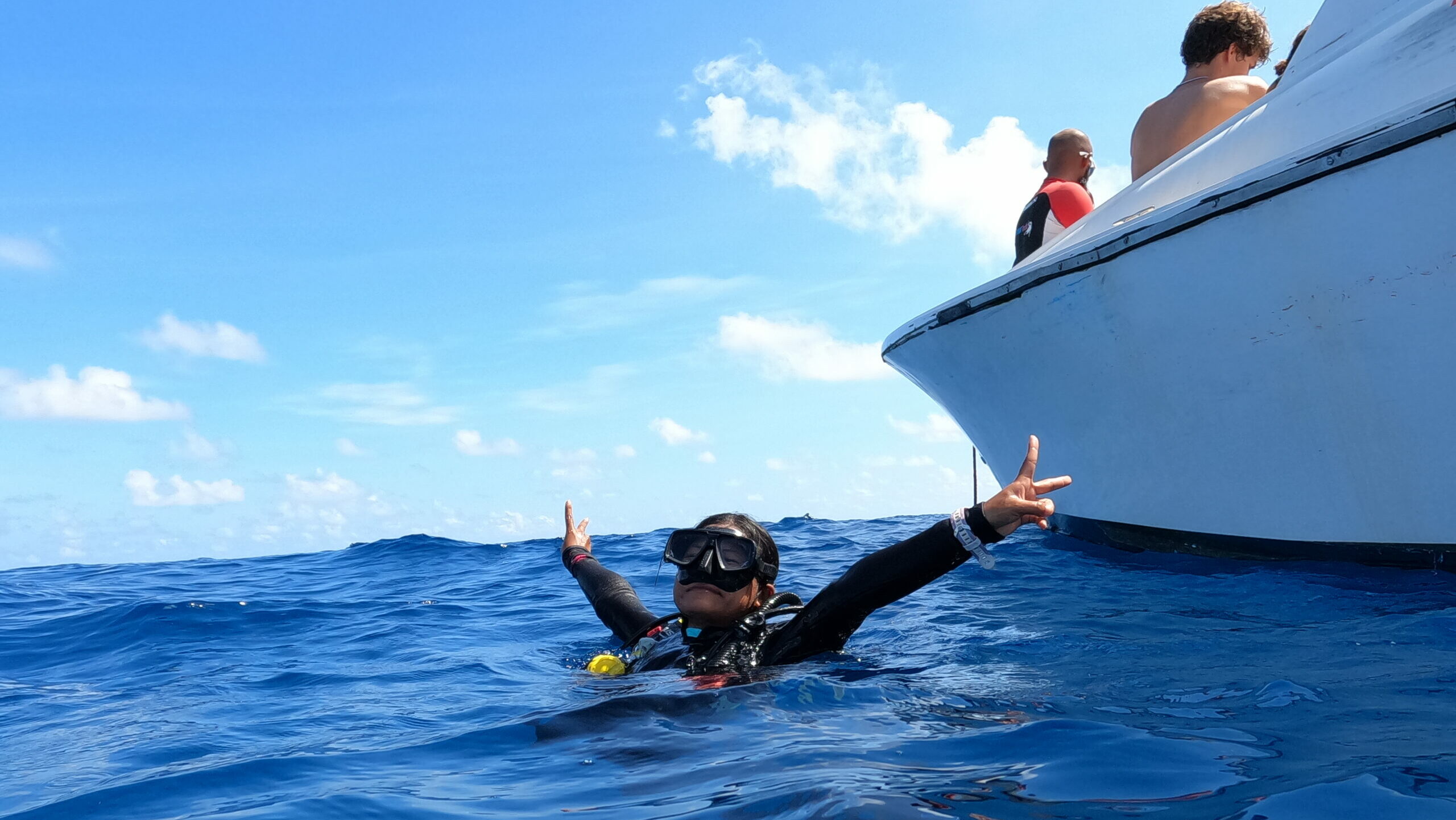
Scuba diving in Andaman is a sport with multiple skills. Becoming a professional scuba diver involves learning, training, and gaining diving experience. It typically begins with obtaining basic diving certification through advanced courses offered by globally recognized scuba diving organizations like PADI, SSI, or NAUI.
Scuba Diving Certifications
1. PADI Open Water Diver provides fundamental knowledge and skills necessary for safe diving. The scuba diving course include both theory and practical learning. First, you complete your theory and then apply it practically. This is a 3 day scuba diving course that involves a total of 5 dives- a confined swimming pool session on day 1, 2 dives on day 2, and 2 dives on day 3. This PADI open water course equips you to dive up to a maximum depth of 18 metres with a buddy!
2. Advanced Open Water Diver is the second level advanced courses that comes after Open Water Diver. The Advanced Open Water Diver course focuses on enhancing your abilities in various aspects of diving. You’ll gain diving experience in navigation and buoyancy, explore deep diving, and complete three speciality dives of your preference. This advanced open water course, again involves theory and practical. The time required to complete this is 2-3 days and it lets you dive up to a maximum depth of 30 metres, how exciting is that?!
3. PADI Rescue Diver focuses on developing skills to effectively respond to dive emergencies, the PADI Rescue Diver course enhances a scuba diver’s ability to handle challenging situations. It teaches you to identify and respond to the slightest problems before they turn out to be something critical. The PADI Rescue Diver course improves your navigation skills, equips you to enroll in a dive master course, fixes minor gear issues and teaches you to use an emergency oxygen kit. Along with a few prerequisites, this course takes around a week’s training.
4. Underwater Photographer is a speciality course focused on the techniques and equipment used in underwater photography, catering to both beginners and experienced photographers. This course introduces you to the SEA (Shoot, Examine, Adjust) method and takes about 2 days to complete after finishing your theory. Not only do you learn to take photos underwater but also choose the right photo equipment.
5. Deep Diver teaches you to strategize for deep sea diving, effectively manage your gas consumption, and recognize and handle narcosis. The deep sea diving course takes 2-3 days to complete and lets you dive up to a maximum depth of 40 metres. Being a speciality course, you can do it along with the Advanced Open Diver Course.
6. Dive master and Instructor courses give your scuba diving a professional touch and subsequently, the difficulty level also rises. But this scuba diving course equip you to dive independently with a buddy (of course! it’s a buddy sport) and explore the most recreational diving. And we’re sure by the time you reach these scuba diving courses, you’ve already become a water baby!
Cost of Scuba Diving in Andaman
Scuba diving in Andaman Islands offers an unforgettable diving experience at a range of prices, catering to different types of divers. For beginners and non-swimmers, a Discover Scuba Dive (DSD) on the shore starts at INR 3500, making it an affordable entry point. Those seeking a more secluded and exclusive dive can opt for a boat dive, which starts from INR 6799. The price includes equipment, instructor supervision, and GoPro photography in some cases. Whether you’re budget-conscious or looking for an adventurous dive, there’s a scuba diving package for every traveler in the Andamans.
If you’re an experienced Diver and looking to become a certified diver, the PADI Open Water Course starts from INR 28,000 for a 3-day program that includes five dives and the necessary theory lessons. For those looking to take their skills further, the Advanced Open Water Course costs around INR 24,00 for a 2-3 day program, allowing you to dive to depths of up to 30 meters.
Why Dive with GO2ANDAMAN?
1.Trusted Dive Partners: We at G02Andaman, where trust is the most valuable element, work only with PADI certified divers and scuba diving schools.
2. Securing cancelled dives: In case your booked dive gets cancelled for whatsoever reason, we help you to find another one with the same standards without compromising on the quality.
3. Biggest catalogue of Diving Options: We offer the best and most varied scuba diving packages at the most optimal rates possible.
4. Varied Scuba Diving Experience: Go2Andaman brings the best dives for all sorts of scuba divers ranging from beginner divers to professional diver.
5. Promoting Diving Community: Our partners believe in being inclusive of the divers as a part of the community rather than passers-by. So you’re sure to witness something very unique!
6. We’re 15 Years Strong. We started out in 2008 as a passionate blog to help people dive and navigate their vacations in the Andaman and Nicobar Islands.
7. We’re a Startup India recognized organization. In 2018, we were stamped by Startup India as the first and the only original private ferry booking platform in the Andaman Islands.
Meet Our Trusted Dive Partners

While who we work with depends on the quality of the dive center and the dives they offer, safety and the feel of the whole thing, some names have undoubtedly been associated with us for a while. They are trusted brands like:
1. DIVEIndia
It all started in 2003 when DIVEIndia was born, and Vinnie introduced the culture of Andaman Islands scuba diving. Back then, there were only a very few other dive sites but Vandit Kalia trained his staff on most dive sites, primarily in Havelock Island, was named after these very people. Today, after a score of its existence, DIVEIndia offers scuba diving both in Neil Island and Havelock Island.
2. Lacadives
Carrying the vision of making one feel like the “steward of the sea”, Lacadives came into existence 25 years ago in Lakshadweep by the very famous Prahlad Kakar. Lacadives have their dive centre near the big hotels from Symphony Samudra to Taj Exotica, aiming to provide 5 star services wherever you are. They have been progressively receiving positive feedback for scuba diving courses in both Port Blair and Havelock Island.
3. Scubalov
Built by Mandira and Jurgen on the philosophy that one’s connection with nature is unique and truly believing that no scuba divers or scuba diving courses are ever the same, Scubalov is a PADI 5 Star Instructor Development (IDC) Dive Resort. ScubaLov started in 2011 in Mumbai with confined pool sessions and expanded to Andaman Islands scuba diving in 2013. They currently operate on Havelock Island and Neil Island.
3 Things No One Will Tell You About SCUBA Diving in Andaman
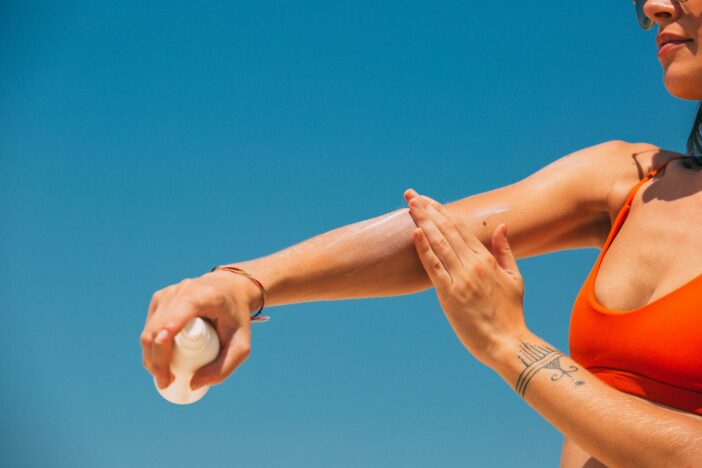
1. Pre-book your dives because there are only very limited slots per day. Scuba Diving in Andaman is a sport that depends on environmental conditions such as water current, water movement, high tide and low tide, moon cycle, sunlight and so on. Hence, to provide the best and safe scuba diving experience, reputed scuba diving schools have a fixed number of slots available.
2. Be mindful of your sunscreen while diving. Shocked? Well, it might not have crossed your mind but sunscreen can be fatally harmful for marine creatures, especially the coral reefs. So if you’re planning to enter the water, make sure to use the sunscreen that does not have oxybenzone, octinoxate, nano zinc oxide and nano titanium dioxide.
3. Do not lie about the smallest medical related issues such as an upset stomach or a common cold because it affects your breathing and buoyancy and might be dangerous. Being a non swimmer and new to scuba diving, one may not understand how critical these tiny everyday problems can be. Hence it’s a good idea to be as truthful as possible so your dive master can be cautious while scuba diving. Additionally, always check the age limit for scuba diving, as certain dive courses and depths have specific requirements to ensure safety. Pregnant women should avoid scuba diving altogether, as the changes in pressure can pose serious risks to both the mother and the baby.
Want Your Free Copy of Our 7-Day Diver’s Itinerary?
We’ve only shared a glimpse of the best dive spots and underwater adventures in the Andamans. After gathering feedback from experienced divers, we’ve crafted this guide to showcase the top dive sites, tips, and must-do activities. Whether you’re a beginner or a seasoned diver, this is your ultimate guide to experiencing scuba diving in Andaman like never before!
Read More: Andaman budget Trip
FAQ’s
-
Do I need to know how to swim?
You can do scuba diving even if you do not know how to swim. You will always be accompanied by an experienced instructor or dive master. They’re there to help you stay comfortable underwater and will assist you at all times.
-
Is scuba diving safe?
Scuba Diving is a safe water activity that is done by thousands of people across the world, daily. It is recommended that you have a decent level of fitness like being able to walk for 45 mins without getting tired. All Instructors and dive masters are equipped with internationally recognized certifications and are trained in dive supervision, diver rescue and Emergency First Response (EFR).
-
What to carry?
Lorem Ipsum is simply dummy text of the printing and typesetting industry. Lorem Ipsum has been the industry’s standard dummy text ever since the 1500s, when an unknown printer took a galley of type and scrambled it to make a type specimen book.
-
What to wear?
Wear your swim-wear or you can even wear a quick-dry shirt and shorts. A wetsuit will be provided at the dive shop that will be worn over this. Wear flip-flops when you go to the dive shop. It is advisable not to wear sports shoes, heels or boots.
-
Who cannot do Scuba Diving?
People with disabilities, pregnant women, people with back issues and respiratory illnesses are strictly not allowed to Scuba Dive.
Ishita | Creative Manager, Go2Andaman A coffee-powered novel writer who loves reading books and blasting metal music. Ishita’s creative world is a wild mix, and somehow, it all makes perfect sense. She’s travelled across almost every corner of India, but getting to explore and write about the Andamans sparked something different. What started as a creative opportunity turned into a deeper connection with these islands. She’s explored most parts of the Andamans and is still chasing remote corners with a notebook in one hand and a cold brew in the other.
